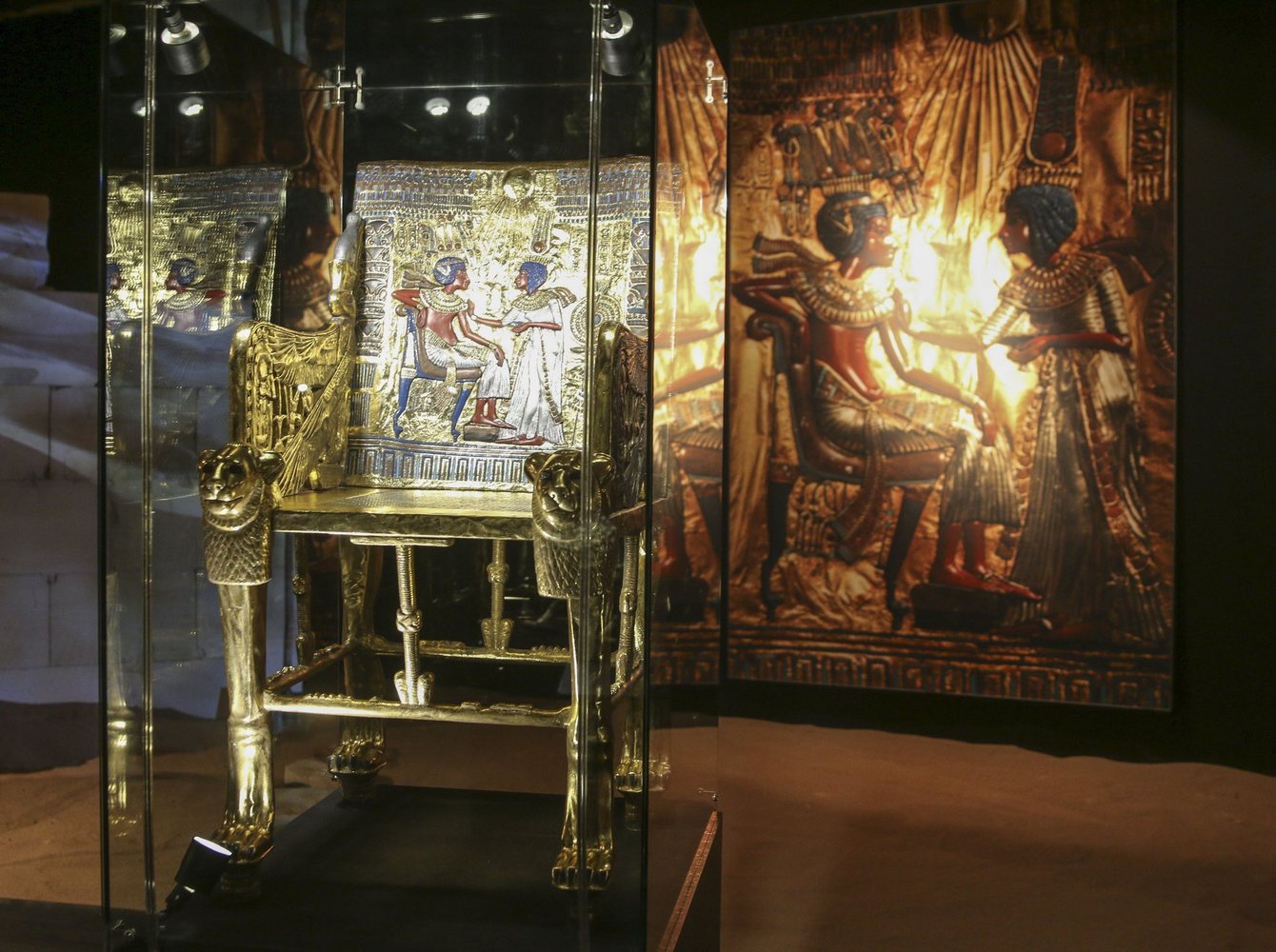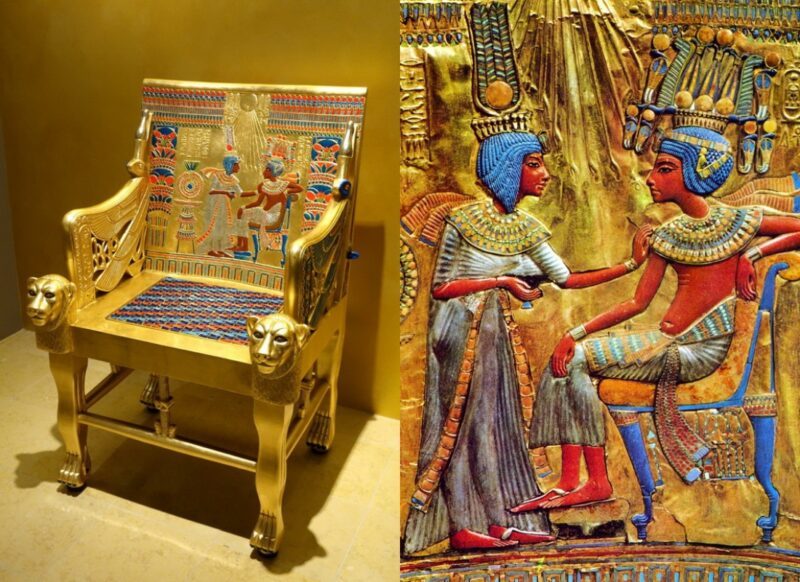 King Tutankhamun and Queen Ankhesenamun, immortalized in the intricate details adorning the back of Tutankhamun’s throne, stand as symbols of ancient Egyptian royalty. The exquisite craftsmanship encapsulated in this artistic masterpiece transports us back in time, offering a glimpse into the lives of these enigmatic rulers.
King Tutankhamun and Queen Ankhesenamun, immortalized in the intricate details adorning the back of Tutankhamun’s throne, stand as symbols of ancient Egyptian royalty. The exquisite craftsmanship encapsulated in this artistic masterpiece transports us back in time, offering a glimpse into the lives of these enigmatic rulers.
King Tutankhamun, often referred to as the “Boy King,” ascended to the throne at a tender age, yet his reign left an indelible mark on history. The artistic rendering on the throne captures the regality of Tutankhamun, adorned in traditional pharaonic attire, a symbol of his authority and divine connection.

Beside him, Queen Ankhesenamun, his half-sister and wife, epitomizes the beauty and grace expected of an Egyptian queen. The intricate details on the throne showcase her as a powerful and influential figure in her own right, standing shoulder to shoulder with her royal counterpart.

The elaborate symbolism woven into the design reflects the religious and cultural significance of ancient Egypt. Hieroglyphs, symbolic motifs, and carefully crafted scenes tell a story of divine rulership, underlining the deep-rooted connection between the pharaoh and the gods.

As we marvel at the detailed depiction of King Tutankhamun and Queen Ankhesenamun on the back of the throne, we are transported to an era where art and royalty coalesced to immortalize the splendor of Egypt’s rulers. This artistic masterpiece serves not only as a testament to the craftsmanship of ancient artisans but also as a portal through which we can explore and appreciate the fascinating world of Egyptian history and culture.






